Having celebrated Ganesh Chathurthi last week with all the religious fervour, this post is a look at one of the traditions followed each year on the day of the festival. The preparation of one of His favorite dishes, the ‘Kotte Kadubu’ which is commonly followed in most households in the South Canara region of Karnataka.
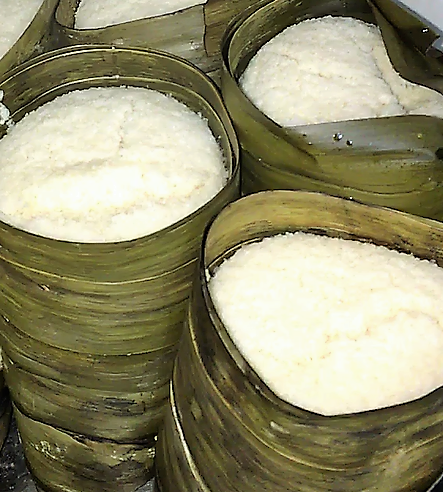 Kotte kadubu
Kotte kadubu
A favorite with the Lord of Beginnings
Known to be a favorite food of the Lord with references found even in the ‘Mudgala Purana’, “kotte kadubu” is essentially a savoury, steamed cake akin to “idli” but steamed in moulds made from the leaves of the screw pine tree. A species that grows in coastal Karnataka, the leaves and its moulds are locally called ‘mundakana ole’ and ‘kotte’ respectively. With its characteristic aroma, the leaves lend a unique flavor to the dumplings.
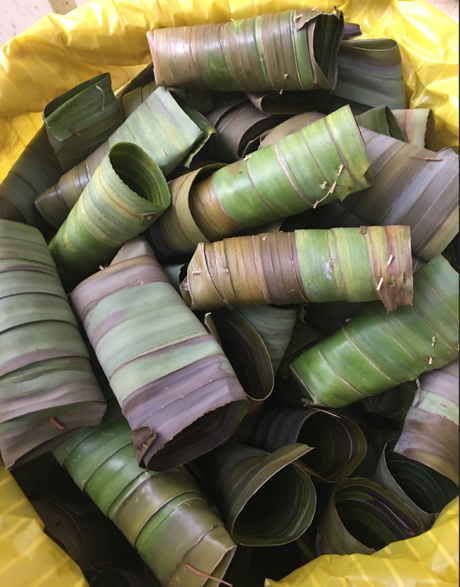
“The ‘kadabu’ is mentioned in the ancient scripture ‘Mudgala purana’ which is a holy text dedicated to Lord Ganesha. Lord Ganesha’s many forms have been described here and one of them is the 8-armed ‘Taruna Ganapati’. Amongst many of His other weapons, the Lord is seen holding the ‘kadabu’ in one hand in this form” says Ambika Holla, a native of Udupi on the significance of this speciality. She adds that the making of the mold using the screw pine leaves is more to do with the fact that the plant is available in the region. Other regions use species endemic to that area like Jackfruit leaves in the Malnad region and turmeric leaves in other coastal regions.
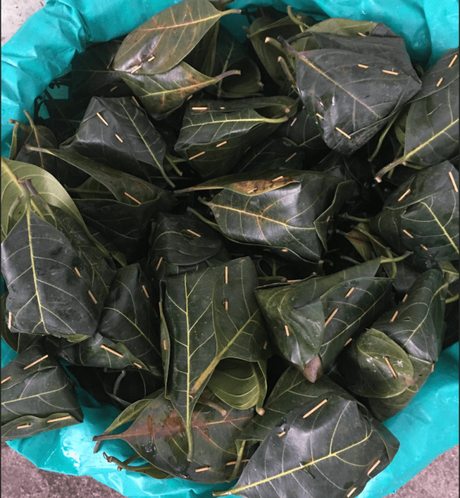
Mudi Akki Kadubu seva
The offering of ‘kadabu’ to Lord Ganapati is considered highly auspicious and when made on a large scale in temples, this offering is called ‘Mudi Akki Kadubu seva’. “This is a highly revered ‘seva’ and most devotees take a pledge to offer ‘kadabus’ as a token of gratitude once their desires are fulfilled or prayers answered. The tradition can be traced to the days when agriculture was the main occupation of the people here wherein they would come and offer rice to God after a successful harvest. The rice would be used to prepare the ‘kadabus’, offered to the Lord and taken back as prasadam” says Anand Urala, manager at the renowned Anegudde Sri Vinayaka temple in Kumbashi about 30 km from Udupi. The temple turns around as many as 1000-1200 ‘kotte kadabus’ each day!
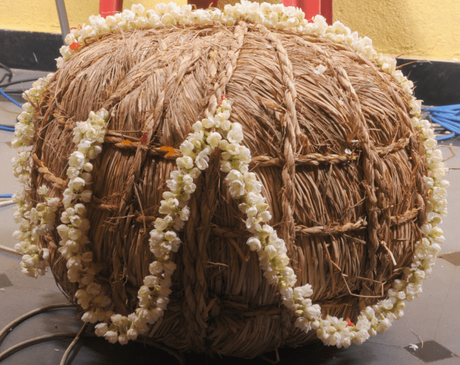
The term ‘Mudi’ refers to a fixed quantity of rice (around 40 kg) that is stored in a sphere made from rice straw and hay. It is common practice to offer one or more “mudis” of rice to make these savoury cakes once your wishes are fulfilled. Apart from the Annegudde temple, the Guddattu Sri Vinayaka Temple near Barkur which is 18 km from Udupi is one of the few other temples that have this offering on their ‘seva’ list.
Arduous task
Known as ‘moode’ in Tulu, the making of the mold for the dumpling is quite an arduous task and not surprisingly a dying craft. The screw pine leaves are elongated and have a thorny texture. The process first involves removing the thorns and heating the leaves on a low flame to remove the moisture content. This makes the leaves less brittle and amenable to folding them into cylindrical moulds whose loose ends are sealed ingeniously using tiny sticks of the coconut palm.
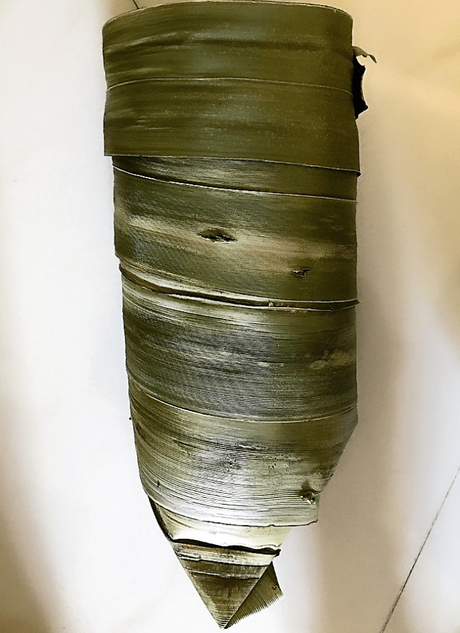
Recipe and Variations
The traditional recipe which is still followed in temples, involves preparing a batter of urad dal and rice. The rice is washed, dried and then ground coarsely on a traditional grinding stone. Most houses today use idli rava/rice rava instead of rice in the batter as grinding raw rice is not the easiest of tasks! Also, moulds made by a few talented ladies are sold readymade in most of the coastal towns today. In Bangalore, the moulds are available in the umpteen “Mangalore stores” in the city. Making moulds from the leaves of the jack fruit tree is also an option preferred by many. The rich phytonutrients in the jackfruit leaf lend a distinct healthy flavor to the cakes. Turmeric leaves are also used to make moulds for kotte kadabu.
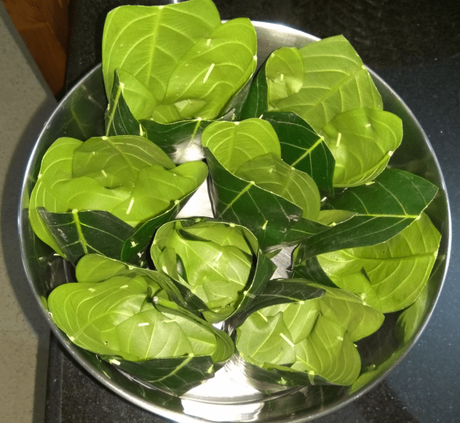
Ingredients
• 1 cup urad dal
• 2 cups idli rava/rice rava
• Salt to taste
• Coconut oil/ghee for greasing the moulds and serving
Method:
• Soak the idli rava and urad dal separately for about 5-6 hours before preparation.
• Grind the urad dal into a smooth, fluffy batter adding small amounts incrementally
• Take portions of idli rava in your palm, squeeze out all the water and add to the urad dal batter (The batter should not be runny, do not add excess water while grinding the ural dal and squeeze the water completely from the idli rava)
• Add salt and mix well.
• Allow the batter to ferment for a few hours and then pour them into the moulds after greasing them with coconut oil/ghee
• Steam in a pressure cooker for about 20-25 minutes.
• Allow it to cool for a few minutes and slowly remove the coconut palm sticks (or toothpicks) from the mould
• Serve hot with coconut oil/ghee on the top and chutney
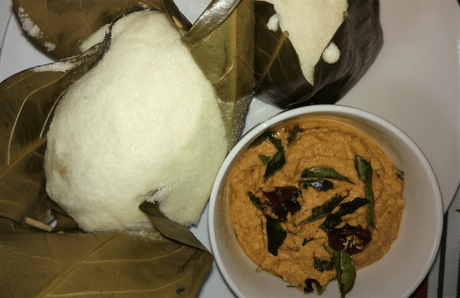
An edited version of this article first appeared in The Hindu. Click here and here for other festival recipes.
